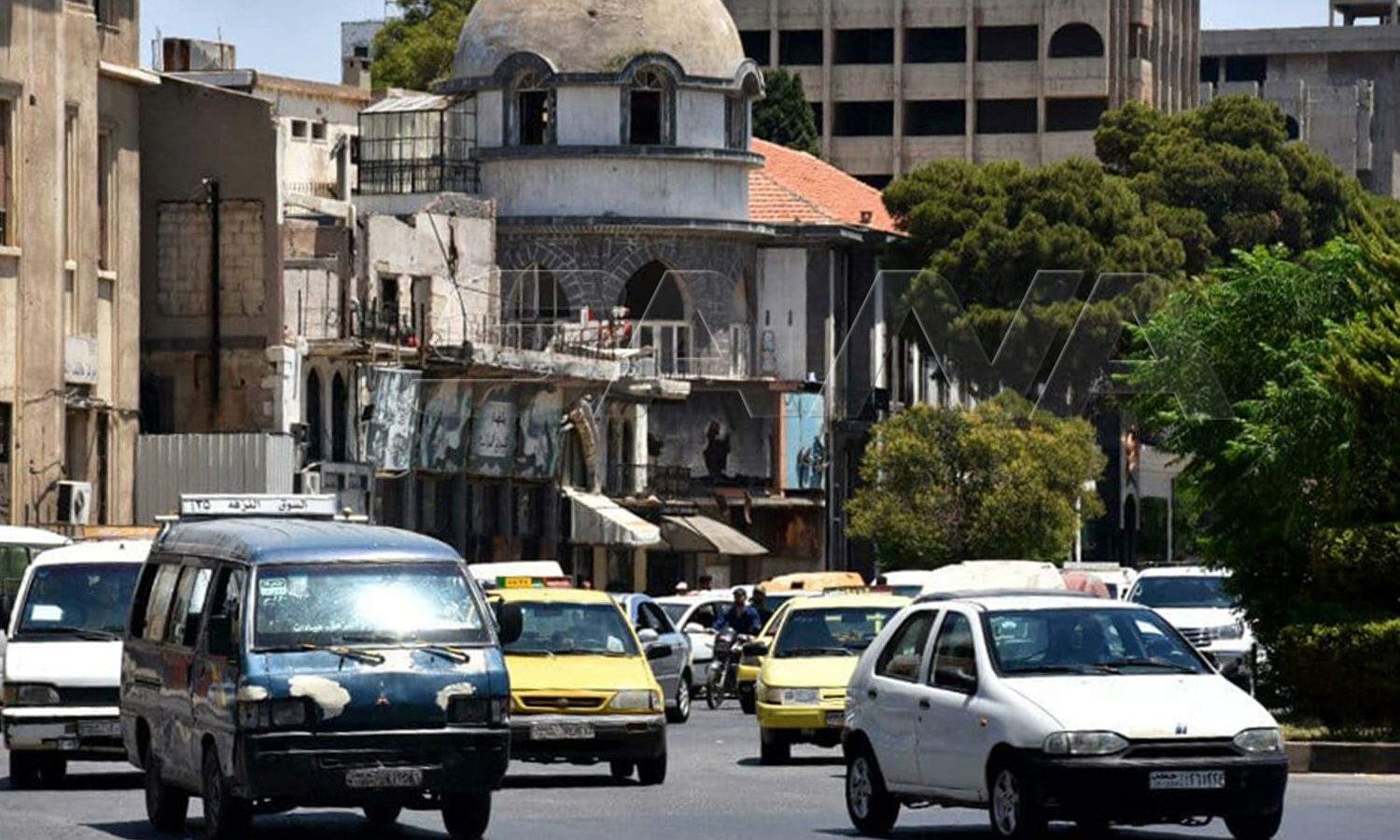



Homs – Orwah al-Mundhir
On the opposite side of the main bus station in Syria’s central city of Homs, taxis are waiting for customers while at the same time a number of drivers are shouting, asking passersby about their destination.
Kamel, 43, taxi driver, told Enab Baladi that the rise in transportation costs, along with the deterioration of everyone’s financial condition, forced taxi drivers to take more than one passenger at the same ride and divide the fare on all to make the cost lower and affordable.
Kamel says: “Our taxis have turned into minibuses, taking all passengers in one drive and delivering each one to his destination.”
Homs, once Syria’s capital of revolution, has been witnessing a severe traffic crisis for more than a year. Many reasons led to the mess and fare hike, which are not commensurate with the domestic income, like shortages in public transportation accompanied by a rise in gasoline prices and the governorate’s lack of a fixed tariff.
Taxi fees range from 5,000 Syrian pounds (SYP = 1.5 USD) as a minimum, up to 25, 000 SYP (7 USD).
At the same time, Homs governorate worked to set minimum fares for transporting passengers by gasoline-powered cars inside the city, based on a study submitted by the Price Setting Committee of the Directorate of Internal Trade and Consumer Protection.
Despite the increase in the price of gasoline more than once, the Homs Provincial Council did not issue any new amendments to the transportation tariff in an attempt to control prices, which made drivers raise prices without any deterrent by the government.
Nasser, 47, a transaction tracker in the Department of Transportation, told Enab Baladi that Homs governorate had not issued any tariffs that control taxi fares for more than a year, which has allowed drivers to squeeze the citizens, especially with the small number of internal transport buses operating in the city—forcing citizens to submit to the high prices of taxi drivers, in order to reach their jobs. Drivers receive 1,000 SYP per kilometer inside the city and 1500 SYP outside the city.
A local website quoted Samir al-Droubi, a member of the Executive Office of the Internal Trade Sector in Homs governorate, saying that a study is being conducted regarding “the fares of transportation mechanisms,” the new tariff will be issued during the following week.
Mahmoud, 34, taxi driver, told Enab Baladi that the fuel allocations on the “Smart Card” (Government’s subsidies card) are not enough for one week, and the messages of aid do not arrive on time, “which forces us to fill up gasoline from the black market, as the price of a liter exceeds 3,000 SYP after lifting the subsidy. As a taxi driver, I cannot transport passengers at a loss, even if the governorate issues a new price. No one will abide by it if it is not reasonable and in line with the price of gasoline and spare parts.”
Since the beginning of February, the Syrian Ministry of Communications and Technology began implementing the removal of government subsidies for a group of “smart card” holders, as the number of eliminated cards reached about 598,000, according to the ministry’s statement to the local Ninar FM radio.
The regime’s government, on 5 February, issued a set of new decisions related to the mechanism of exclusion from subsidies, which included limiting the exclusion from the subsidies system to owners of commercial records, starting from the premium category to the third category, with the fourth-degree commercial register remaining covered by the subsidies, according to what it reported, according to the Syrian Prime Ministry’s official account on Facebook.
The bus stops in Homs are constantly witnessing severe overcrowding, with squeeze inside the bus due to the high number of passengers and frequent stops, which made the taxi the best option to reach any destination quickly despite the high prices.
Youssef, a university student from the town of Talbiseh, told Enab Baladi that the taxis are the fastest choice to reach your destination in comparison to the prices.
The fare from the central bus station to the Baath University gate is more than 10,000 SYP (about 3 USD), “But when I take a taxi with several passengers, I pay 2,000 SYP,” Youssef said, adding “despite the high price, I can avoid the bus crowding and I save time.”
Taxi drivers who have turned their cars into public transportation arrange the taxis queue among themselves according to who arrives first at the bus station.
The number of passengers who take a taxi on their own has become less than before, a group of taxi drivers told Enab Baladi, in conjunction with the increase in prices. The process of getting a passenger has become much more difficult, in addition to the fact that driving in search of a passenger has become expensive.
if you think the article contain wrong information or you have additional details Send Correction